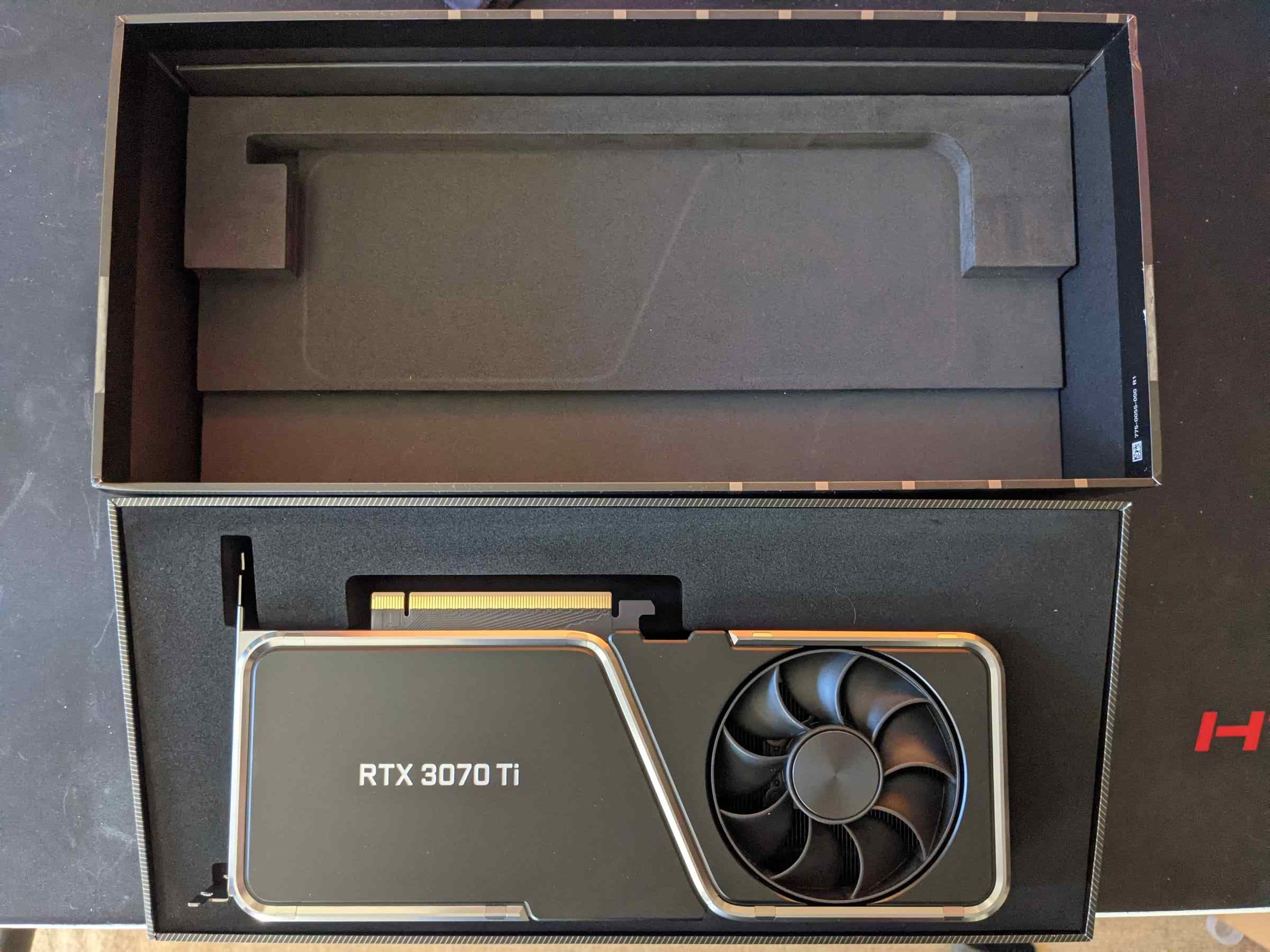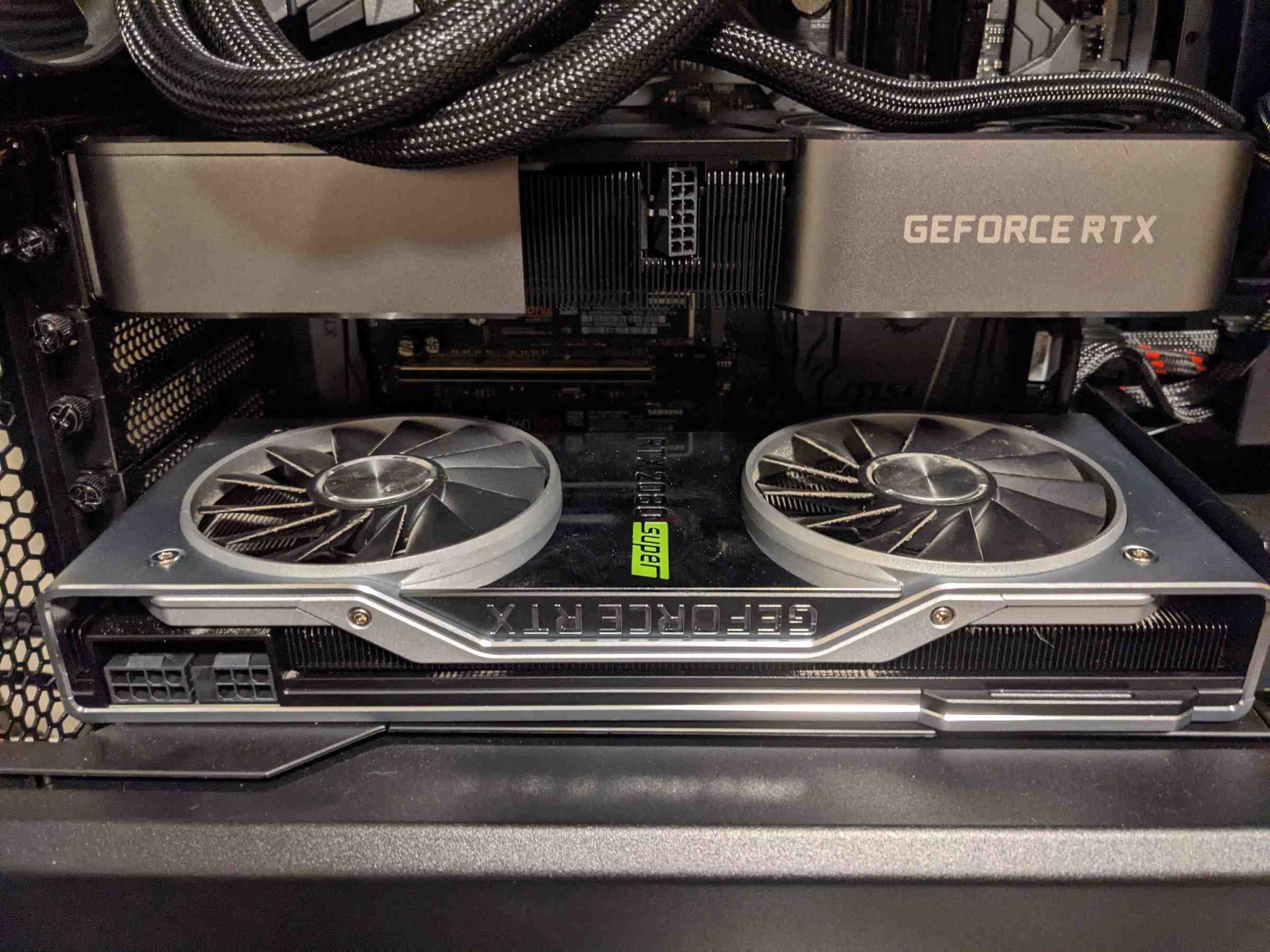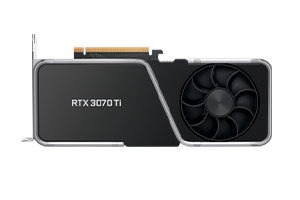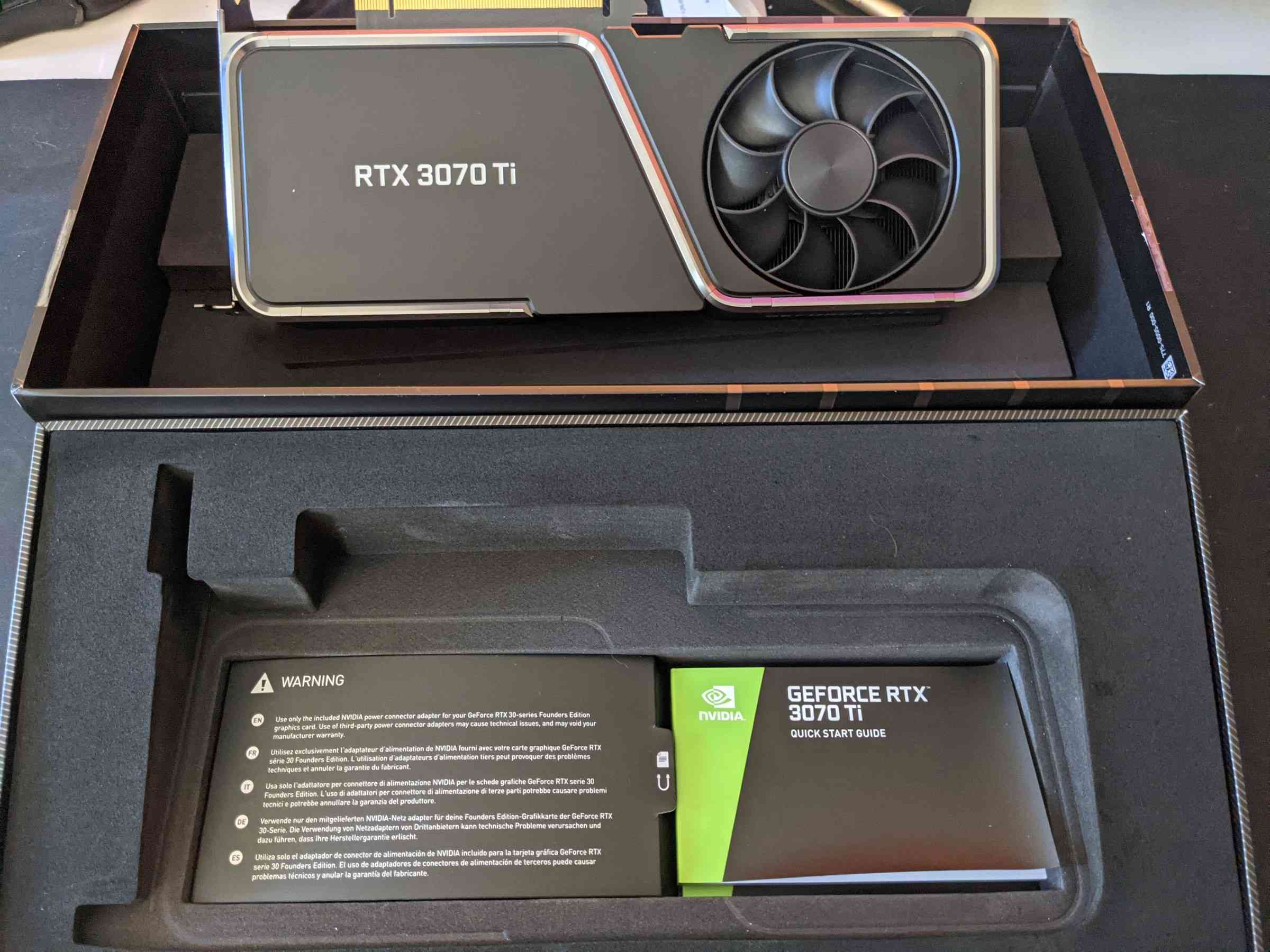A fantastic Nvidia GPU, if you can get your hands on one at a reasonable price.
Nvidia GeForce RTX 3070 Ti review
Our verdict: Nvidia GeForce RTX 3070 Ti review
Getting your hands on a graphics processing unit (GPU) has been tough for most of the past year, particularly if you’re looking at an Nvidia 30-series graphics card. Despite demand most definitely outstripping supply for the launch cards, Nvidia has still been incrementally launching newer 30-series GPUs, and the Nvidia GeForce RTX 3070 Ti is the latest graphics card to join the ranks to take on the AMD RX 6000 GPUs.
To get GPUs in the hands of gamers instead of crypto miners, Nvidia has limited the hashrate (cyptocurrency mining potential) on the GPU which, according to Tom’s Hardware, is more of a deterrent to Ethereum-based cryptocurrencies than others. Fingers crossed this helps dissuade miners and stops the frustrating trend of artificially bloated 30-series third-party GPU pricing.
Pricing, mining and availability gripes aside, it’s tough to fault the 3070 Ti, which offers incredibly speedy performance at 1080p, fantastic frame rates for its intended 1440p demographic, and even some surprisingly solid 4K results.
If you can get your hands on a 3070 Ti at a reasonable price and you’re in the market for a GPU upgrade, this is absolutely a worthy GPU companion for a 1440p desktop PC.

Nvidia GeForce RTX 3070 Ti price Australia
This is the million-dollar question or, more accurately, the double-the-RRP question: how much is the Nvidia GeForce RTX 3070 Ti in Australia? Nvidia’s recommended retail price (RRP) of AU$959 is very reasonable in the context of where this GPU sits in relation to other 30-series RRPs and fares well in comparison to its closest last-gen comparison, the 2070 Super, which had a launch price of AU$860 about two years ago.
The catch is that you can’t buy the Nvidia GeForce RTX 3070 Ti Founders Edition in Australia and are, instead, reliant on third-party GPU manufacturers. While the 3070 Ti hasn’t seen the widescale launch unavailability of previous 30-series graphics cards, you can expect pricing that starts at around double the $959RRP.
Below is table with a handful of in-stock examples at the time of writing this review.
Data effective 15/6/2021. Offers and availability may vary by location and are subject to change.
Nvidia GeForce RTX 3070 Ti installation and basics
The size of the Nvidia GeForce RTX 3070 Ti box feels small in comparison to the power of the GPU that’s inside. On the top of the box is the 3070 Ti, and there’s basic documentation alongside the 12-pin power adapter for the 3070 Ti Founders Edition that Nvidia sent me for this review.
If you’ve installed a GPU before, there aren’t any real quirks here. If you haven’t, it’s as simple as removing two PCI-express (PCIe) slot covers on the back of a desktop PC case, then sliding the 3070 Ti into the corresponding PCIe slot. From here, align and add the two screws from the slot covers, then connect the GPU power cables. Simple.
I was switching out an Nvidia GeForce RTX 2080 Super Founders Edition, so the only minor hiccup was that the fans have shifted from beneath the GPU to on top with the 3070 Ti. For my existing cable configuration, this meant running a motherboard power cable over the top of the fan, which didn’t quite have the length to wrap under (though some rejigging could get it out of the way of the fan). Initially, I was concerned the cable might snag on the fan or cause cooling problems, but this didn’t prove to be the case after a week of extensive testing.
Overall idle GPU temperatures during everyday computing sit below 35 degrees Celsius and the 3070 Ti never made it past 71 degrees Celsius during gameplay and benchmark tests, which is comfortably short of the 93-degree maximum temperature. It’s worth noting that my test PC is inside a Be Quiet Dark Baser 900 revision 2 case with the fans set to max (instead of the quiet setting) to improve overall cooling and compensate for my overclocked CPU.
In terms of power usage, Nvidia FrameView (software used for GPU testing) also showed a maximum wattage draw of 264W, which is also short of the recommended 290W power draw. While other reviews have noted that the 3070 Ti runs slightly hot, the temperatures in my tests were comparable to my 2080 Super.
Nvidia GeForce RTX 3070 Ti benchmarking
The Nvidia GeForce RTX 3070 Ti is built for those gamers seeking to not worry about performance with 1440p gaming, even with ray tracing enabled and, better still, the frames-per-second (fps) advantage you glean from throwing Deep Learning Super Sampling (DLSS) into the mix for supported games. For the benchmark tests, I used the latest GeForce drivers available at the time (466.63) and Windows Version 21H1 (OS Build 19043.985), testing across 1080p, 1440p and 4K resolutions and maxed-out graphical presets.
My test PC comprises of the following parts alongside the 3070 Ti:
- Motherboard: MSI Z370 Godlike
- CPU: Intel i7-8700K (overclocked to 4.6GHz)
- Memory: 32GB Corsair Vengeance DDR4-3200
Here’s how the 3070 Ti fared with a mix of recent and demanding games.
As you can see from the table above, the 3070 Ti is no slouch when it comes to 1080p gaming. The visually demanding Red Dead Redemption 2 pulls in over 100fps, while Forza Horizon 4 nets the kind of frames that renders my 165Hz Acer Predator XB271HU monitor unable to keep up (G-Sync-wise). Rainbow Six Siege is the most impressive with up to 342fps using Vulkan (instead of DirectX 11), which should please those 360Hz monitor owners who are eyeing off the 3070 Ti.
In fairness, you’d expect these kinds of numbers at 1080p given the 3070 Ti is built to impress at quad high definition (QHD) instead of Full HD. And the numbers show that the 3070 Ti delivers the goods on ultra settings with a 1440p resolution, too. Borderlands 3 had the biggest percentage drop between 1080p and 1440p (27%), with most of the other results falling between 13% and 20%. The exception is the minor 6% decrease for Rainbow Six Siege using DirectX 11 and the surprising 2% frame-rate gain when using Vulkan.
While not built for 4K gaming, I was still impressed with the very playable results with the 3070 Ti. Rainbow Six Siege was the standout example, showing that those with high-refresh-rate monitors don’t necessarily have to compromise on visual fidelity to maintain high frame rates. Forza Horizon 4 also pulled in an impressive average 129fps. Meanwhile, the visually taxing Borderlands 3 had the biggest hit to frames at 47fps, but Red Dead Redemption 2 still impressed at 55fps, while Horizon Zero Dawn managed a 65fps average, which is very playable for this sprawling and gorgeous single-player open-world game.
Nvidia GeForce RTX 3070 Ti RTX and DLSS
One of the perks of using a 30-series graphics card is tapping into second-generation RTX cores and third-generation Tensor cores: the former is used for ray tracing and the latter is used to AI upscale graphics for better frame rates, both in real-time. Because real-time ray tracing is very demanding, it results in noticeably lower frame rates, which is why the tech pairs so well with DLSS for better frame rates.
The table below gives you an indication of games that use ray tracing at its highest setting and DLSS set to quality.
The only dedicated ray-tracing game in the table above that doesn’t use DLSS to help boost frames is Dirt 5, but that’s still manageable at 1080p with a 11% difference in frame rate between ray tracing off and on (and 112.3fps is still very playable). DLSS has mixed results in taming ray tracing for the other three games, with a 23% frame rate gain in Watch Dogs: Legion, a 12% gain in the Riverside test in Wolfenstein: Youngblood, and only a 6% gain in Shadow of the Tomb Raider. Strangely, there were identical average frame rates for the Lab X test with ray tracing off and on.
At 1440p, the frame-rate gains were more noticeable with the exception of a meagre 8% boost for the Lab X test in Wolfenstein: Youngblood. The 28% improvement on the Riverside test for Wolfenstein: Youngblood was the second most impressive boost behind the 36% gains for Watch Dogs: Legion, which turned a janky 39fps into a playable 61fps.
When it comes to 4K, this is where the 3070 Ti starts to show it’s not intended for the 2160p resolution, with Shadow of the Tomb Raider, Dirt 5 and, most notably, Watch Dogs: Legion, which maxed out at 53fps, 57fps and an unplayable 16fps, respectively (with DLSS on for Tomb Raider and Watch Dogs). Still, Wolfenstein: Youngblood proved playable with DLSS off in both tests (61fps and 64fps) and even better with DLSS activated (89fps and 94fps).
Those in the know about computer gear may have noticed that the specs listed above for my test PC are from a 3.5-year-old computer in terms of motherboard, CPU and memory. So, is it viable to buy a new graphics card to improve performance when these older parts may be causing a bottleneck? Yes and no.
Comparing my Nvidia GeForce RTX 3070 Ti 1080p, 1440p and 2160p benchmark scores with those from AusGamers—another local outlet that has newer innards (with an AMD CPU) than my test rig—the results ping-pong between games in terms of which PC gets the best frame rates. The newer rig with the Ryzen CPU has slightly better 4K performance for Assassin’s Creed Valhalla (53 vs 52fps) and Gears Tactics (61.3 vs 56.4fps), with better results across the board for Borderlands 3 (123.5, 92.8 and 53.7 fps vs 115.2, 84.57 and 45fps) and Horizon Zero Dawn (115, 107 and 68fps vs 111, 95 and 65fps).
That said, Assassin’s Creed Valhalla and Gears Tactics scored slightly higher 1080p (90 vs 86fps) and 1440p (110.7 vs 110.2fps) frame rates on my older Intel PC, with Forza Horizon 4 (206.5, 173.1 and 128.7fps vs 164, 156 and 127fps) and Red Dead Redemption 2 (105.92, 86.17 and 55.14fps vs 97.4, 80.1 and 53.5fps) boasting better frame-rate scores across the board. Even compared to PC Mag’s newer Intel CPU, my test PC still garnered slightly better frames in Red Dead Redemption 2 (105.92, 86.17 and 55.14fps vs 103, 83 and 55fps).
It’s worth noting that, in an attempt to get better frames in poorly optimised games like Hell Let Loose, I followed a Windows 10 tweaking guide that led to noticeably better performance for pretty much all of the games I tested it with.

Nvidia GeForce RTX 3070 Ti vs 2080 Super
Before we move on entirely from benchmarks, the table below pits the Nvidia GeForce RTX 3070 Ti Founders Edition vs the 2080 Super Founders Edition. While not the fairest of generational comparisons, it shows that the 2080 Super is still a great GPU and, if you have one inside your desktop tower but are itching to buy a 3070 Ti, you should probably wait. Note that both sets of tests were done with the same specs outlined above, as well as the same Nvidia drivers and version of Windows 10.
There are a fair few single-percentage differences in the table above, with Wolfenstein: Youngblood and Watch Dogs: Legion even offering parity in one of their respective tests, and a 1fps win for the 2080 Super in another. Still, as you might hope, there are some noticeable 20%-and-above gains, with a 22% boost for Watch Dogs: Legion, two wins for 1440p and five for 4K.
Assassin’s Creed Valhalla had a 20% 1440p improvement for the 3070 Ti compared to the 2080 Super and it was the same percentage improvement for the Wolfenstein: Youngblood Riverside test with DLSS off. The beefier percentage gains come from 4K results, most notably from Borderlands 3’s 26% advantage and Assassin’s Creed Valhalla’s 27% edge. Even though Horizon Zero Dawn had a lower percentage advantage at 23%, it took the game from 50fps at 4K to 65fps.
Nvidia GeForce RTX 3070 Ti gameplay performance
Benchmarks are all well and good, but the main reason you’re likely eyeing off a 30-series GPU is because you want to know how games play with an Nvidia GeForce RTX 3070 Ti. It should come as no surprise that the 3070 Ti offers silky-smooth gameplay for less-demanding games like Age of Empires II: Definitive Edition, even if you crank up the graphics and the resolution to 4K.
The majority of my gameplay testing time was spent in the newly released Chivalry 2, which was averaging around 107fps at 1440p with maxed-out settings. Initially, I was concerned that the 3070 Ti was responsible for massive frame stutters during mouse movements, but I was able to isolate that to the Razer Viper 8KHz. Given the latency-sensitive nature of Chivalry 2’s gameplay, having a reliably high frame rate helps with the timing windows for blocks, counters and ripostes.
The rest of my hands-on tests were with Call of Duty: Warzone and Hell Let Loose. Unfortunately, Hell Let Loose isn’t currently well optimised in its early access state, but the 3070 Ti kept it north of 60fps the vast majority of times.
Call of Duty: Warzone generally has better optimisation, but it also has aw history of having performance woes with my 2080 Super. Like Chivalry 2, a high frame rate is essential for providing a competitive edge in Warzone, and being able to rely on a 130fps-ish average at 1440p (with 100% render scale, instead of my usual 90%) makes enemies easier to spot and it means I feel infinitely more confident in head-to-head 50/50 gunfights.
Is the Nvidia GeForce RTX 3070 Ti worth it?
If you can find an Nvidia GeForce RTX 3070 Ti for around the RRP that Nvidia is asking, this GPU is absolutely worth picking up. If you can’t, the big disclaimer is you shouldn’t look to this GPU for across-the-board 4K impressiveness. Similarly, if you have a 2080 Super or above, you’re better off looking for a 3080 or better to boost your performance.
That said, the 3070 Ti is a no-brainer buy if you have a 10-series GPU (or AMD equivalent) or lower, as it represents a good mix of price and performance. The 3070 Ti represents a noticeable performance edge to the 2070 Super or below, but if you can hold out for supply to meet demand and prices to trend towards Nvidia’s RRP, you should absolutely do so.
Related Articles






